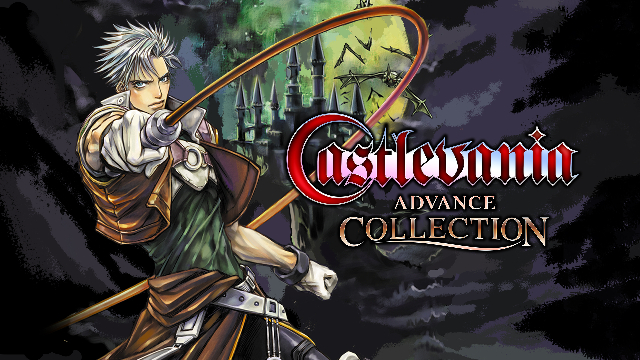At some point in the storied history of Konami’s Castlevania series, there was a magical time when the company pushed the series in intriguing directions, both mechanically and narratively, to create a magical trio of related games that existed purely on the Game Boy Advance.
Until now, when everyone can sink their teeth in and enjoy what might very well be some of the finest games the entire series has seen.
It’s been a while since the golden days of the GBA, so it’s easy to forget about these small-screen adventures. Konami followed up on the DS with some great adventures that added in a fair bit of touch-screen gimmickry, but as with so much of their great classics, the series just sort of faded since.
The Castlevania Advance Collection is a fantastic reminder of why we have a whole “Metroidvania” genre and why “Vania” is in the name to begin with.
Castlevania Advance Collection Review: A Retrospective with Real Bite
On the surface, these are exactly what we expect from all Castlevania side-scrollers. As always, the games primarily take place in Dracula’s huge, maze-like castle where paths are only unlocked by earning new skills and beating bosses.
There are whips, swords, throwing axes, bones, whole roasted chickens, exacting jumps, deadly traps, and monsters that respawn every time you enter the room (no matter how many times you kill them).
It’s Castlevania, basically, but with twists taken from the beloved Castlevania Symphony of the Night. This means the inclusion of some significant RPG-like character development mechanics: an inventory system, armor, item and weapon upgrades, actual character stats and leveling, and other touches that freshen up the entire series.
Each addition has slight differences in its role-playing gimmicks that make it feel and act just a little different than the other two. Playing them all together though makes it very obvious this is a single series as they all feel, look, and act largely identical in all the right ways.
Castlevania Circle of the Moon is the first offering. It adds a collectable card element, wherein players combine action and attribute cards leading to different enhancements for its vampire hunter, Nathan Graves. This dual-card system can be used to unleash all kinds of hell against the army of the night, including flaming whips and icy storms.
Castlevania Harmony of Dissonance adds more impressive tweaks like the boss rush and spell fusion system that focuses on players combining spellbooks they find with their secondary weapons. It also brings back the Belmonts. In this case, Juste Belmont, Simon’s grandson.
Finally, Castlevania Aria of Sorrow features a new character, Soma Cruz, who has the ability to absorb the souls of slain monsters and acquire their abilities. With over 100 potential new tricks, there’s an impressive amount of character customization that lets Soma to attack in a variety of styles. From throwing bones and heaving butcher knives to sonic weapons, spears, and more, there’s plenty to play with.
Playing these three on the Switch portably is definitely the best way to experience them. There’s not much in the way of visual enhancements and seeing the old GBA graphics on a giant 4KTV doesn’t do them any favors. On the smaller Switch screen, everything looks better, making it easier to appreciate just what visual wonders these games were at the time.
There’s a huge array of well-defined monsters, large bosses, and plenty of great flame, wind, water, and other effects. The soundtracks are excellent as well, with familiar effects and scores.
Also of note is how good the games actually still play. While an option to reconfigure the controls would have been preferable so secondary weapons had their own button, the games otherwise play well. New enhancements are the ability to save at any time and rewind, which is a great feature in retro games.
I haven’t mentioned the fourth game, Dracula X. Released in 1995 on the Super Nintendo, it’s the weakest game here. The graphics are oddly sluggish, the controls feel rather antiquated, and the game is largely known for being the hardest in the series. It’s definitely an old-school-style Castlevania, so worth checking out for completionists, but not the star of the collection.
Castlevania Advance Collection Review — The Bottom Line
Pros
- The three GBA games are fantastic, even still
- Hours of monster-killing action among four games
- Really great use of RPG and weapons customizing elements make these games feel distinct
Cons
- Dracula X is pretty weak
- Those Game Boy graphics don’t look too great blown up on a large screen TV
- More control customizing options would have been welcome
Straight ports of old games can be a hard sell, especially from the Game Boy Advance. What’s impressive is how fun these games remain, despite the very aged graphics. It’s unfortunate Konami hasn’t modernized the series, but there are hours of great gameplay in this pack to make it worthwhile.
I was surprised how well these classic Castlevania adventures hold up, but it makes me sad because Konami doesn’t seem to be making new ones or even just modernizing the older games.
[Note: Konami provided the copy of the Castlevania Advance Collection used for this review.]









Published: Sep 30, 2021 06:26 pm